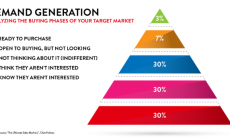When I was entering the workforce during the early 1990s in Brazil, it felt like a transition from an analog world to a digital paradise. After years of a rigid protectionist policy for computer equipment in the 1970s and 1980s, the whole country was still playing catch-up with the so-called microcomputer revolution. This article from The New York Times, written in 1984, describes the conundrum of those regulations well:
Brazil nurtures the industry through a complex network of regulations administered by the Special Informatics Secretariat, known by its Portuguese acronym, SEI. Those who wish to manufacture computers in Brazil must get permission from the SEI, and certain markets—including micro- and minicomputers—are reserved for Brazilian companies. Critics of the Government’s protectionist policy have warned that Brazil is in danger of excluding itself from the computer revolution, while those who favor the market restrictions insist the system is necessary if the country is to secure its technological independence.
All those controls left Brazil frozen within a technological bubble and ten years or so behind the rest of the world. At that time, my personal life was 99% analog: combustion engine cars, VCRs, TV, radio, film cameras, telephone landlines, and Walkmans were the pinnacle of the technology available to most people in Brazil. The IBM PC, the Apple Macintosh, and music CDs were occasionally seen in the wild, but mostly brought by the rare affluent friends returning from their annual Florida vacations.
So my first few days at the office of a multinational IT corporation in São Paulo back then felt like Disneyland to me: xerox and fax machines, one PC per employee, dot matrix printers, overhead projectors, and, most impressively, green screen terminals interconnected with offices around the globe, where you could exchange electronic messages instantaneously with other employees.
Fast forward to today’s workplace, and many of us working in large organizations—especially the heavily-regulated ones—may be having almost exactly the opposite experience: our personal lives are touched by digital experiences everywhere, from Netflix to Uber, from Google Docs to Snapchat, and from smart watches to smart homes, while our office routine seem to have been trapped somewhere in the early 2000s. You’ll see plenty of colleagues taking notes using pen and paper, relying mostly on email for their communications, requiring a conventional computer (desktop or laptop) for most of their tasks, carrying plenty of hard copies of documents, editing copies of Microsoft Office documents saved to local drives, and depending on a few rudimentary work apps in their mobile devices.
So how does this awareness of the ubiquity of digitization tie in to a philosophical premise posed thousands of years ago? I will expound on the reversal and development of this digital experience using Plato’s Allegory of the Cave in my following article. Stay tuned!






